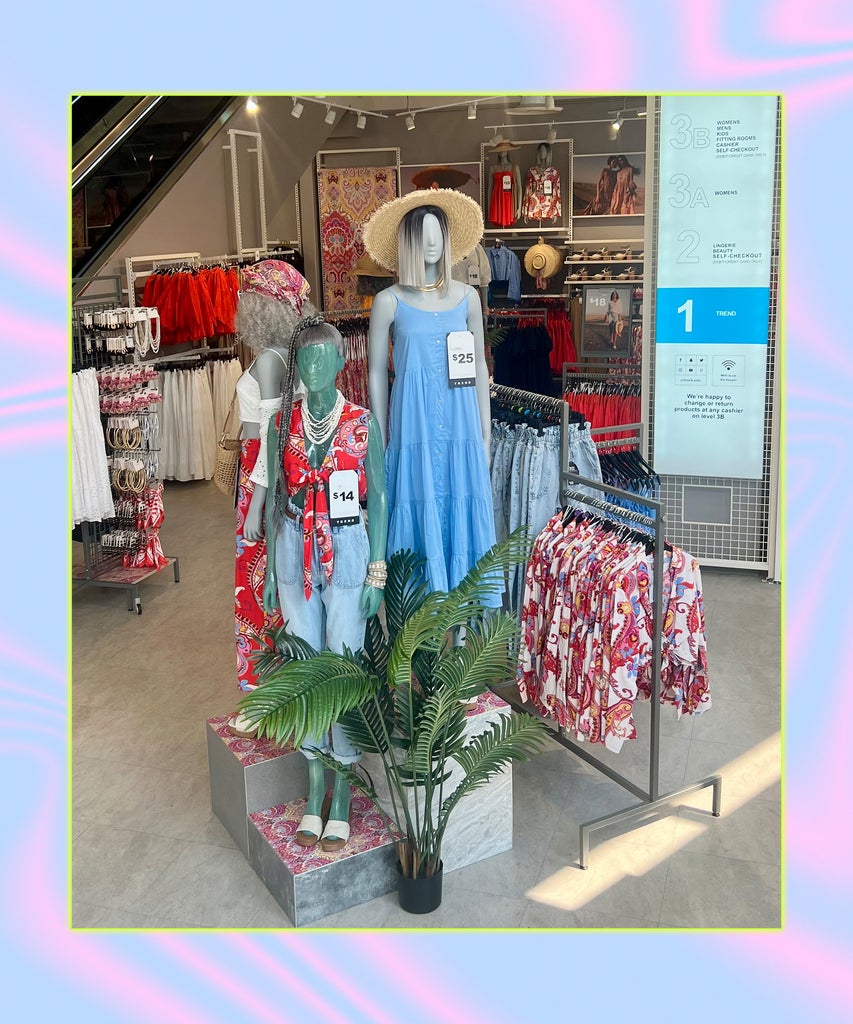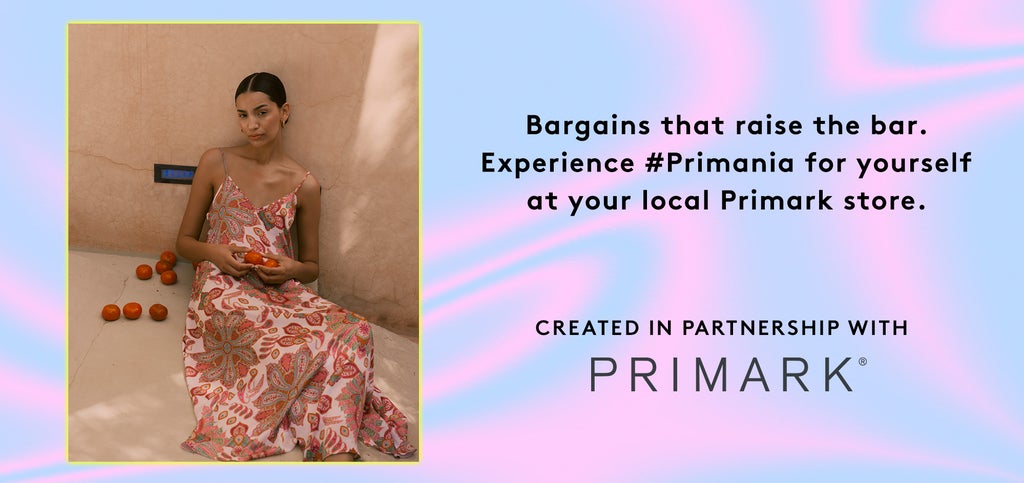
In no particular order, this is what I purchased in the throes of lockdown: at least six sweatsuit sets; a mask to match each one, naturally; colorful eyeliner and eyeshadow (since lipstick was no longer necessary); a handful of glitzy dresses and tops for future, post-pandemic nights out; a DIY stick-and-poke tattoo kit; and a horde of face and hair masks to pamper myself with. Like many, I threw myself into online shopping frequently and excessively, more so than at any other point in my life, because, well, I had no other choice.
And yet, despite the incredible convenience and terrifying ease of checking out an impulse buy from an Instagram ad I saw seconds earlier, all from my smartphone, I’ve realized one thing: I still really love shopping IRL. Not even the thrill of instant gratification can replace the tactile experience of sifting through racks, of discerning how the fabric looks and feels (let's face it, a product flat just doesn’t cut it). I’ve found total gems, like a pair of snakeskin printed leather pants (that make my butt look *amazing*), that I likely would have scrolled past online. Which brings me to my next point: Not only is a store’s inventory more curated (versus overwhelming, infinite possibilities), but shopping in-person can also help curb overconsumption. It’s much, much easier to examine what you actually need when you have it right in front of you.

Of course, I’m not the only one reveling in my newfound appreciation for in-person shopping. There’s something of a brick-and-mortar renaissance that’s taking place across the retail landscape. Sure, 2020 and 2021 may have seen countless storefronts shutter, but once pandemic restrictions lifted, seemingly everyone flocked to physical store locations to do their shopping.
“Post-pandemic, the recovery was swift and significant, and even in a period of intense economic challenges, the relative performance has been strong,” says Evan Chernofsky, SVP of marketing at retail analytics and foot traffic data company Placer.ai, adding that shopping digitally doesn’t take away from the power or value of physical locations. “Brick-and-mortar retail is entering a period where its wider value is more obvious than ever, and there’s a growing recognition that specific aspects just can’t be replaced by digital alternatives.”
According to a recent report from the U.S. Department of Commerce, e-commerce only accounted for 15.1% of total retail sales in the first quarter of 2023. And while e-commerce continues to see growth, the National Retail Federation states that much of that growth includes multichannel sales where physical stores still account for part of the fulfillment process. Overall, about 70% of total retail sales are taking place offline in brick-and-mortar stores.
The retail real-estate landscape also reflects this return to pre-pandemic norms. According to analytical work by industry research platform The Daily on Retail, 2022 saw five times more store openings than closures, while closures were down more than 55% from 2021. And it’s not just brick-and-mortar giants that are seeing this expansion. “There are large multi-brand retailers that were once fully e-commerce now opening flagship storefronts in major cities,” says Alexandra Yanoff, a director at Brand Urban, a New York City-based real estate advisory brokerage company. “That obviously says something about the importance of a brick-and-mortar presence.”
Of course, opening a storefront isn’t without its challenges. “The caveat is that the rents are back, too, if not higher than they were pre-Covid, especially in best-in-class markets,” she says. This poses challenges for those looking to open in highly coveted areas while not-as-desirable locales remain filled with vacancies. But even with these real estate obstacles, many brands continue to prioritize their physical presence, whether from an omnichannel standpoint (which encompasses both physical and digital) or solely on brick-and-mortar expansion.
Take Primark, the Irish retailer that made its much-anticipated stateside debut in 2015, for example. A longtime cult-favorite shopping destination across Europe (the brand boasts over 400 stores in 15 countries), it plans to expand from its now-17 U.S. locations to a whopping 60 by 2026, focusing solely on providing a standout and special in-store experience. In fact, Primark’s website doesn’t even offer an option to shop online, instead allowing you to check stock of each item at every store, acting as a virtual showroom to preview what awaits you in-store.

It’s a strategy that reflects the retailer’s long-standing dedication to brick-and-mortar since its 1969 inception as an expansive, all-encompassing one-stop shop for affordable-yet-trendy fashion, beauty, and homewares that gives consumers access to touch, try on, and test products. For example, the Downtown Brooklyn location, my local store, boasts four sprawling levels to explore. On a recent visit, I was able to nab my entire wardrobe and essentials for an upcoming beach getaway in one fell swoop — bikinis, coverups, bronzing body oil, a sleek reusable water bottle (and all without breaking the bank). Moreover, multiple sales associates are always on the floor to help you at any time, but should you truly want a solo moment to shop, self-checkout kiosks are available to speed up the purchase process.
It’s this wildly triumphant storefront-focused strategy, coupled with the discovery of truly amazing, affordable finds that have fueled Primark’s success. Coined #Primania by its loyal fan base, love for the brand runs deep — and it’s why new store openings yield thousand-person-deep lines that wrap around entire city blocks (the fact that the brand’s in-store content on Instagram performs better than any other type of content is indicative of how much hype there is surrounding the IRL shopping experience). “When I look around our stores, I see people rediscovering the joy of shopping — not just acquiring new things, but the experiences that come with it,” says Primark U.S. president Kevin Tulip. “These are feelings and moments that some thought were lost during the pandemic, but as the crowds in our stores show, in-store shopping doesn’t seem to be going anywhere.”
“The return to experiences has been a theme this year, and shopping is an experience,” says Chip West, a retail and consumer behavior expert at marketing solutions company Vericast. “Personal service, something not easily replicated online, will remain important to customers. In-store preferences are more pronounced in categories like apparel and accessories, as fit, appearance, and feel are critical.”
In addition to convenience and differentiation, consumers have come to expect more from retailers post-pandemic. “Consumers quickly realized they still wanted in-person experiences once the pandemic subsided, and shoppers will seek this out in physical stores,” says Renee Hartmann, cofounder of strategy consultancy CLA and co-author of Next Generation Retail. “They want to be entertained, to have a sense of discovery, and to have meaningful human interaction. They don’t want to go shopping just to buy things; they want to experience something they can’t get from shopping from home.”
That means a creative, inventive approach to retail that goes beyond simply purchasing products, like department stores with built-in cafés or beauty retailers offering in-store makeup or hair services. “People want to socialize and make shopping an experience, an activity,” adds Brand Urban founder Taryn Brandes. “The brands that are growing are the ones that offer something special, like these services or exclusive products that are only available in-store, not online.”
And it's paying off — as evidenced by the rapidly growing trend of influencers taking their followers with them on their in-person shopping sprees (the #ShopWithMe hashtag on TikTok yields 4.9 billion views).
So what’s in store for the future of retail? Technology will continue to advance, making the e-commerce shopping experience all the more easy, personable, and interactive, but the tangible aspect of shopping in-person will remain deeply important. “We expect the digital and physical retail experience to merge into a single, blended experience in which the user seamlessly and simultaneously interacts across the digital and real world,” Hartmann says.
Overall, the experts all agree: Brick-and-mortar is here to stay. At the end of the day, people are always going to value human connection and face-to-face experiences, something we all learned firsthand during the early days of lockdown. This, Hartmann says, solidifies brick-and-mortar’s place forever in the retail landscape. “Despite speculation that brick-and-mortar retail will die with the increase of online shopping and omnichannel retail, we expect brick-and-mortar stores to endure in the future,” she says. “E-commerce can’t be beaten in terms of convenience, speed, and personalization, but it still lacks the community, entertainment, and the experiential element that consumers crave.”

Like what you see? How about some more R29 goodness, right here?